
#Climate needs #electrification AND #hydrogen.
Both compete for #renewableelectricity, policy and infrastructure support. Policy makers have to take decisions, secure expectations, avoid further fossil lock-in
Our paper offers guidance.
@NatureClimate
rdcu.be/cj6zc
1/8
Both compete for #renewableelectricity, policy and infrastructure support. Policy makers have to take decisions, secure expectations, avoid further fossil lock-in
Our paper offers guidance.
@NatureClimate
rdcu.be/cj6zc
1/8
2/8
#efuels(right) replace fossils without the end-use transformation required by (direct) #electrification(left)
This promises to make combustion technologies and fossil infrastructure part of the climate solution;
yet, shifting the burden to the supply side has limitations…
#efuels(right) replace fossils without the end-use transformation required by (direct) #electrification(left)
This promises to make combustion technologies and fossil infrastructure part of the climate solution;
yet, shifting the burden to the supply side has limitations…
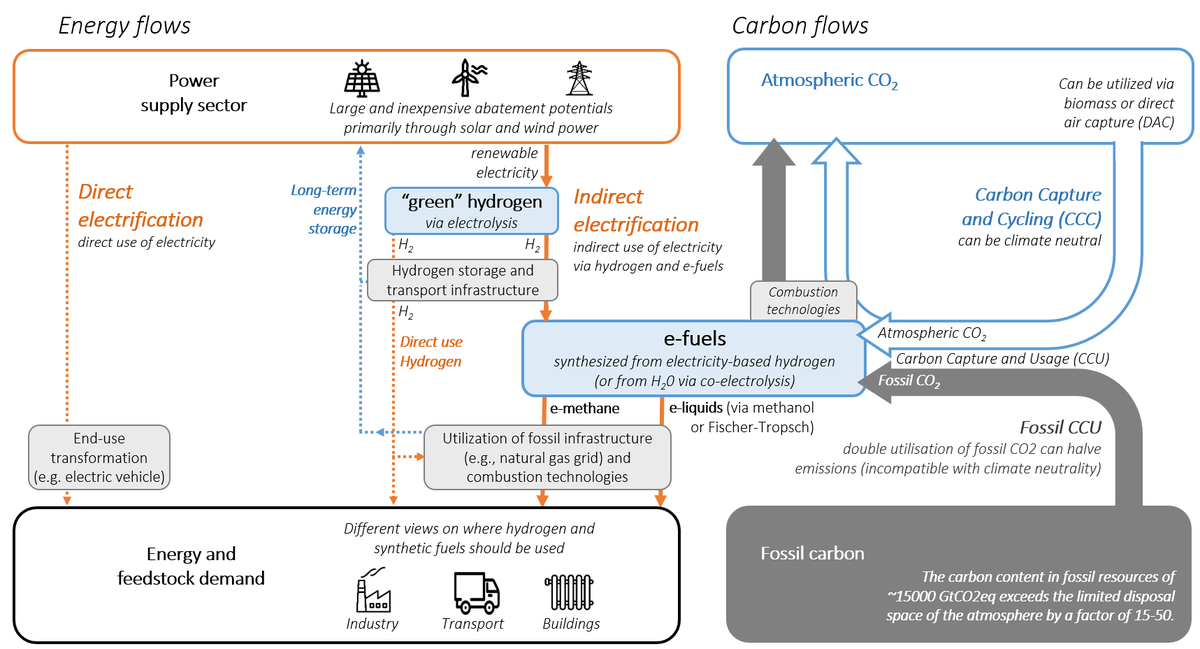
3/8
#Efuels require 2 – 14 times more (renewable) electricity than a direct #electrification (e.g. electric cars are five times more efficient)
Remember, (growing) renewable power capacity is far from fully meeting only today’s electricity demand.
(no regret: #renewableexpansion)
#Efuels require 2 – 14 times more (renewable) electricity than a direct #electrification (e.g. electric cars are five times more efficient)
Remember, (growing) renewable power capacity is far from fully meeting only today’s electricity demand.
(no regret: #renewableexpansion)
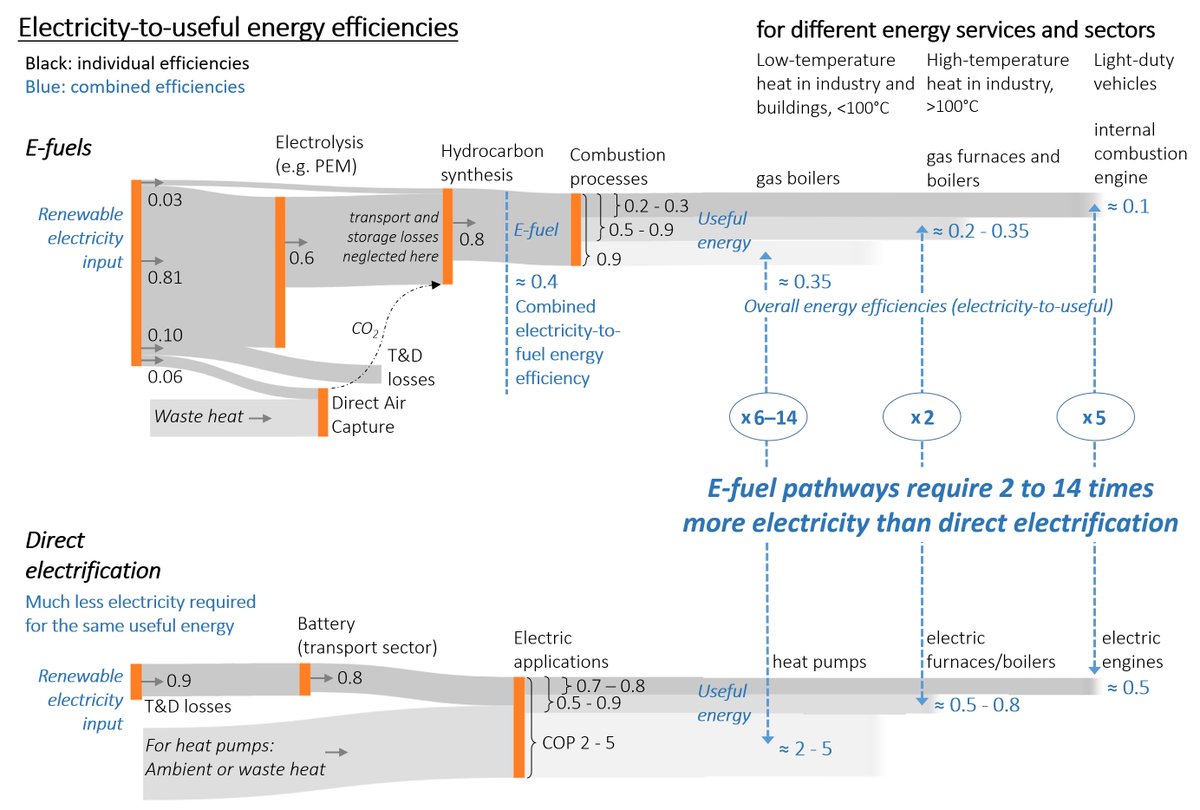
4/8
Transport sector: #Efuels can reduce CO2 based on ~100% renewable electricity and atmospheric CO2. With the current electricity mix, e-fuels strongly increase CO2 compared to fossils (while #ElectricVehicles reduce emissions today).
Remember, our CO2 budget is limited
Transport sector: #Efuels can reduce CO2 based on ~100% renewable electricity and atmospheric CO2. With the current electricity mix, e-fuels strongly increase CO2 compared to fossils (while #ElectricVehicles reduce emissions today).
Remember, our CO2 budget is limited
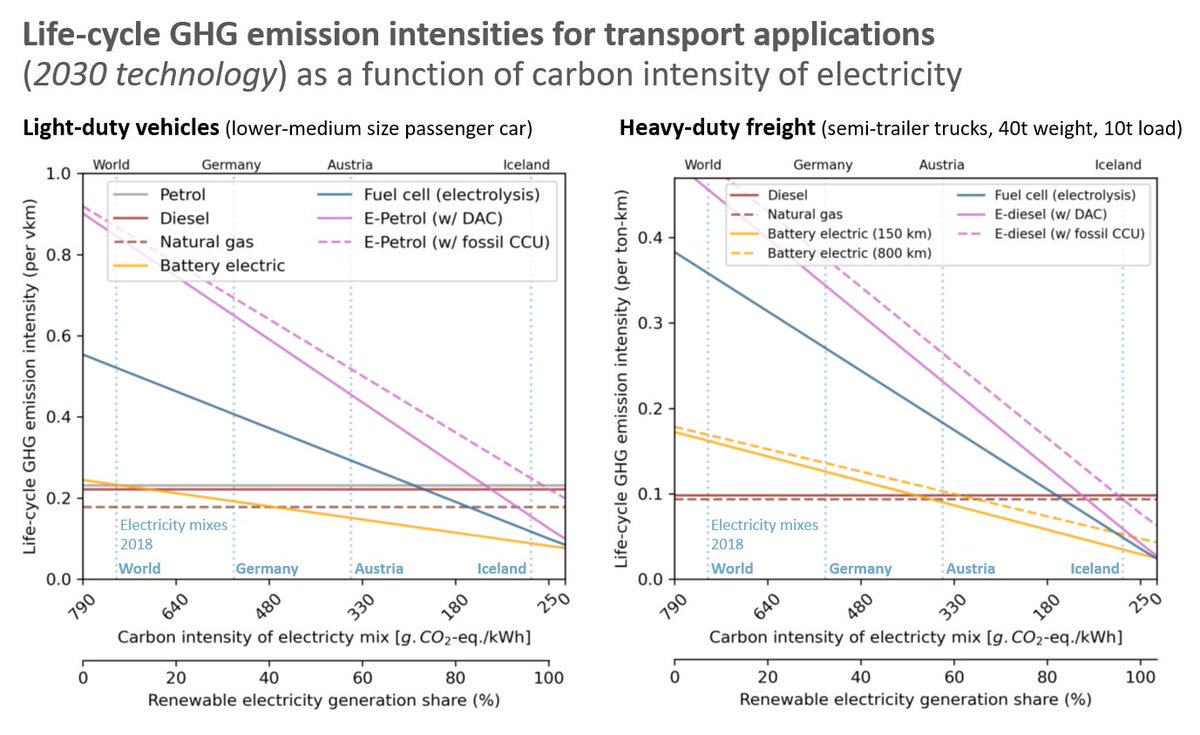
5/8
#Efuels will likely not be competitive in the next two decades. Required #carbonprices are 800-1200 €/tCO2 today.
Innovation and scaling can reduce costs significantly; yet, their deployment relies on massive and continuous policy support (e.g. subsidies).
#Efuels will likely not be competitive in the next two decades. Required #carbonprices are 800-1200 €/tCO2 today.
Innovation and scaling can reduce costs significantly; yet, their deployment relies on massive and continuous policy support (e.g. subsidies).
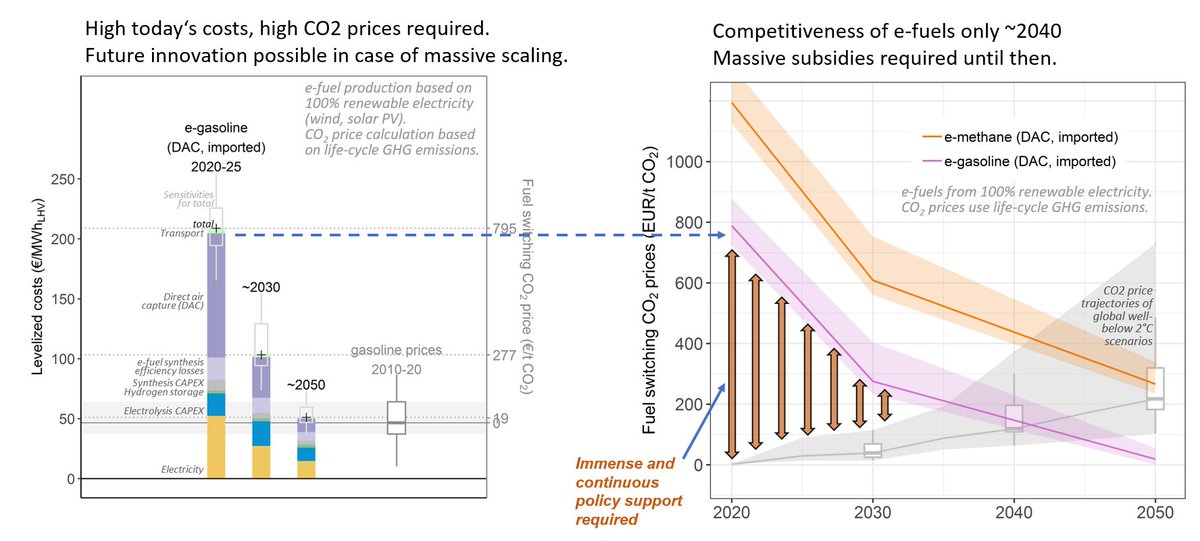
6/8
#Efuels may be available and competitive in the long run; yet, it is unlikely that they become cheap and abundant early enough – given limited time and #CO2budget left.
Broadly betting on e-fuels, thus neglecting end-use transformation, could lock in fossil fuel reliance.
#Efuels may be available and competitive in the long run; yet, it is unlikely that they become cheap and abundant early enough – given limited time and #CO2budget left.
Broadly betting on e-fuels, thus neglecting end-use transformation, could lock in fossil fuel reliance.
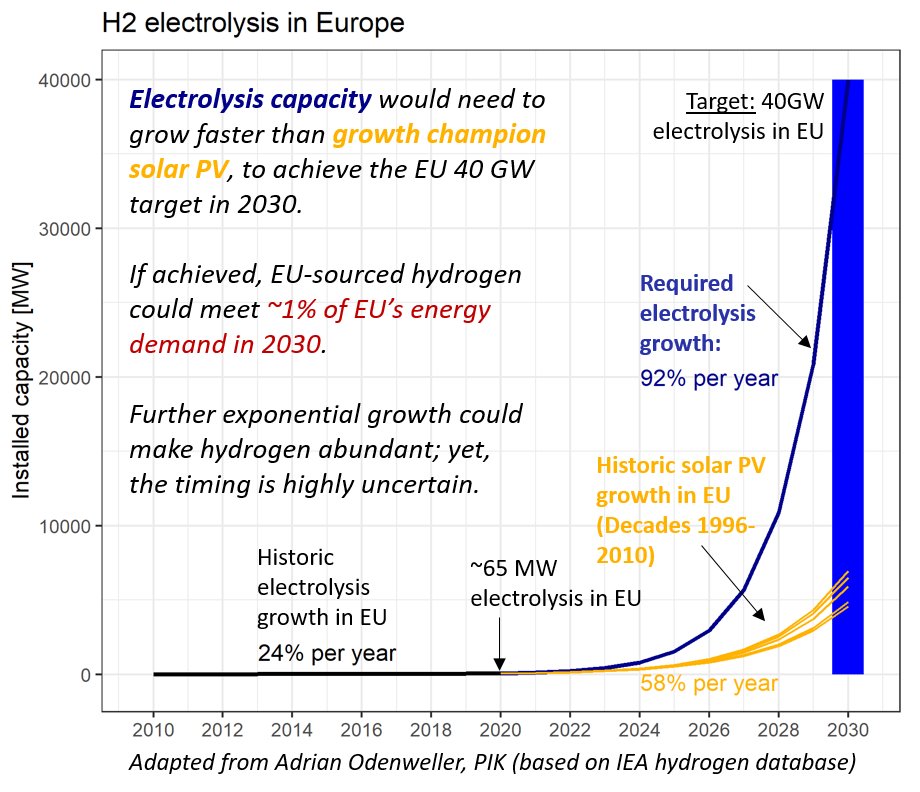
7/8
Comparing CO2 abatement costs indicates three end-use categories.
#Hydrogen is indispensable in category 3: impossible-to-electrify sectors and markets, which are huge! For OECD this would require ~5000 GW additional #windpower/#solarPV, ~3000 GW #electrolysis.
Comparing CO2 abatement costs indicates three end-use categories.
#Hydrogen is indispensable in category 3: impossible-to-electrify sectors and markets, which are huge! For OECD this would require ~5000 GW additional #windpower/#solarPV, ~3000 GW #electrolysis.

8/8 So..
1) Scale #hydrogen particularly for #steel/#aviation/#shipping/#ammonia/#olefins
2) Broadly betting on e-fuels risks further #fossil lock-ins
3) #Electrification is cheaper, available today, and makes efficient use of scarce #renewables
4) read our paper for all nuances
1) Scale #hydrogen particularly for #steel/#aviation/#shipping/#ammonia/#olefins
2) Broadly betting on e-fuels risks further #fossil lock-ins
3) #Electrification is cheaper, available today, and makes efficient use of scarce #renewables
4) read our paper for all nuances
I forgot to explicitly ackknowledge @a_odenweller on this beautiful graph! Thank you for your great work on green hydrogen scaling.
• • •
Missing some Tweet in this thread? You can try to
force a refresh



